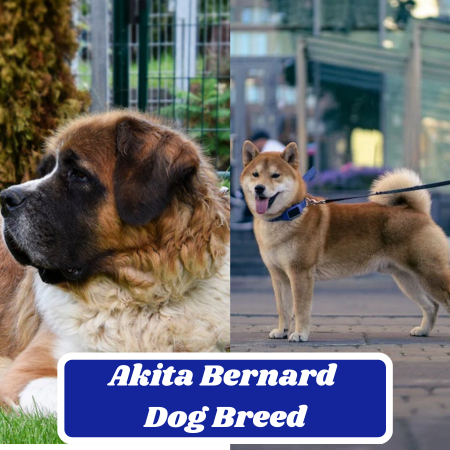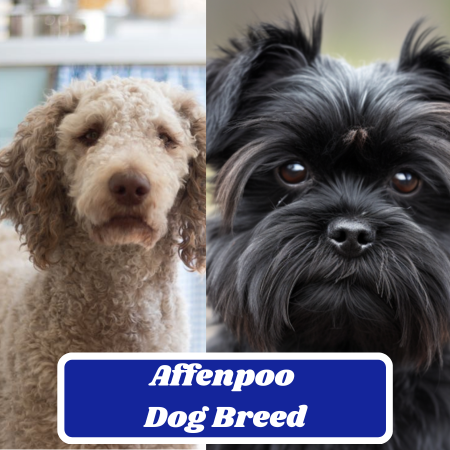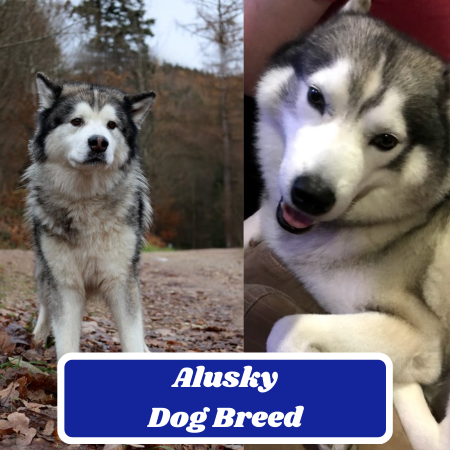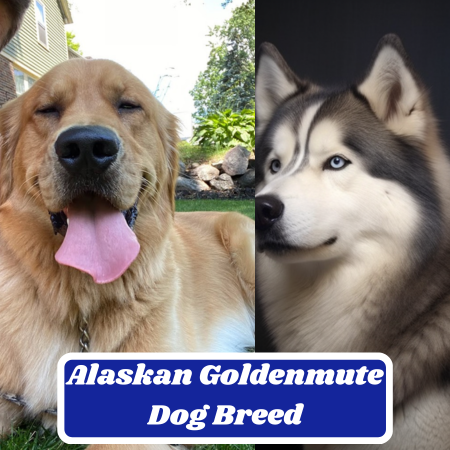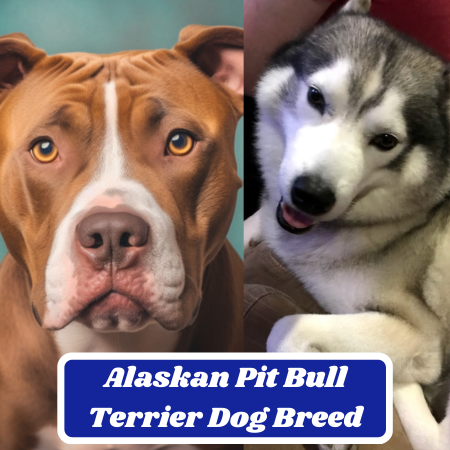Alaskan Shepherd Dog Breed: Characteristics, Information & Facts
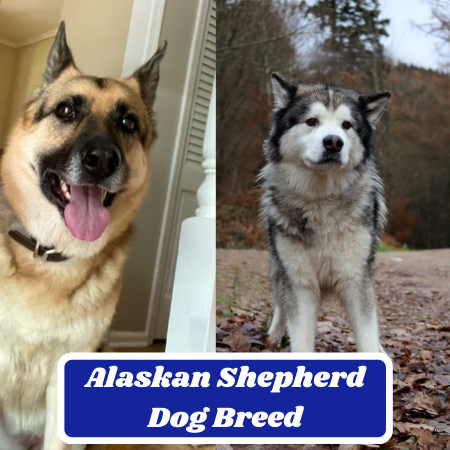
| Physical Characteristics | Alaskan Shepherd |
|---|---|
| Size (inches) | 22-27 inches |
| Actual Weight | 70-130 pounds |
| Life Span | 10-15 years |
| Colors | black, brown, gray, or white |
| Type of Coat | Thick, double coat |
| Energy Levels | High |
| Apartment Living | Not recommended |
The Unique and Wonderful Alaskan Shepherd Breed
If you’re looking for a loyal, intelligent, and protective dog, then the Alaskan Shepherd breed may be just what you need. This breed is a mix between the German Shepherd and the Alaskan Malamute.
Since both these breeds are known for their intelligence, loyalty, and beauty, it’s no wonder that their mix is absolutely stunning. The Alaskan Shepherd is a large dog that will definitely catch your eye with its double coat that comes in various colors including black, brown, gray, or white.
Their pointed ears give them an alert appearance while their bushy tail shows off their playful side. This amazing breed also has a strong muscular build, making them capable of performing various tasks.
Overview of the Breed
The Alaskan Shepherd breed was created by crossing two highly respected breeds – The German Shepherd and The Alaskan Malamute. They were first bred in North America to create a loyal companion who could perform various tasks such as herding livestock or pulling sleds through the snow.
One unique aspect of this breed is its intelligence level which makes them great for performing complex tasks like search-and-rescue missions or guarding your property. Additionally, they have a strong work ethic that’s coupled with an intense loyalty to their owners.
Overall, these dogs make great pets due to their affectionate nature towards humans and ability to perform various tasks effectively.
In this article we’ll take an in-depth look at the history of this breed as well as explore its physical characteristics, personality traits, health concerns grooming needs and ideal living environment so you can decide whether owning one would be right for you!
History and Origins
The Mysterious Origin Story of the Alaskan Shepherd Breed
The Alaskan Shepherd breed is a relatively new hybrid breed that has gained popularity for its unique characteristics. While the exact origin of this breed is still somewhat shrouded in mystery, it is believed to have originated in North America, specifically Alaska.
The breed was created by crossing an Alaskan Malamute with a German Shepherd to create a dog with the former’s strength and endurance and the latter’s intelligence and trainability.
Historical Uses of the Alaskan Shepherd Breed
The Alaskan Shepherd breed was originally bred for work purposes, primarily as sled dogs used for transportation across snowy terrain. Hunters also used them to track prey such as bears and wolves due to their excellent sense of smell and hearing.
Additionally, these dogs were also utilized as protectors against intruders or predators that may pose a threat to their families or livestock. Overall, they were highly valued for their versatility in performing various tasks in harsh environments while remaining loyal companions.
Understanding the history and origin story of the Alaskan Shepherd breed can help us appreciate its current status as an exemplary working dog while acknowledging its history serving humankind’s needs.
The next sections will delve deeper into this fascinating dog’s physical characteristics, personality traits, health concerns, grooming needs, ideal living environment suggestions before concluding with final thoughts on why this dog deserves serious consideration when looking for your next pet or working companion.
Physical Characteristics
| Physical Characteristics | Alaskan Shepherd |
|---|---|
| Energy Levels | ⭐⭐⭐⭐ |
| Intelligence | ⭐⭐⭐⭐ |
| Loyalty | ⭐⭐⭐⭐ |
| Active | ⭐⭐⭐⭐ |
| Curious | ⭐⭐⭐ |
Size, weight, and height range of the Alaskan Shepherd
The Alaskan Shepherd is a large breed dog that typically ranges in size from 22 to 27 inches at the shoulder. They can weigh anywhere from 70 to 130 pounds, with males generally being larger than females. This breed is known for its strong and muscular build, which makes them capable of performing a variety of tasks.
Coat color and texture variations
The Alaskan Shepherd’s coat can vary depending on the mix of breeds in their lineage. However, most Alaskan Shepherds have a thick double coat that helps keep them warm in colder climates. The coat can come in a variety of colors including black, gray, white, cream, red, and brown.
Unique physical features such as their double coat, pointed ears, and bushy tail
One unique feature of the Alaskan Shepherd is their double coat. The outer layer is made up of longer hair that helps keep water from reaching the skin while the undercoat provides insulation.
This adaptation allows them to stay warm during harsh winters in Alaska.
Their pointed ears are another distinguishing characteristic which gives them an alert appearance.
Many people believe this trait comes from their German Shepherd bloodline. Their bushy tail serves as both an aesthetic feature and a functional one by providing balance while running or climbing over rough terrain.
The tail also helps to maintain body temperature by covering the nose when asleep or resting outdoors during cold weather conditions.
Overall, these physical characteristics help make the Alaskan Shepherd a versatile breed capable of thriving in cold climates while also possessing strength and agility for various tasks such as herding or search-and-rescue work.
Personality Traits
| Temperament and Personality Traits | Alaskan Shepherd |
|---|---|
| Playfulness | ⭐⭐⭐ |
| Loyalty | ⭐⭐⭐⭐ |
| Stubbornness | ⭐⭐ |
| Responds well to training | ⭐⭐⭐ |
| Good with children | ⭐⭐⭐ |
| Good for protection | ⭐⭐⭐ |
| Good with other animals | ⭐⭐ |
The Loyalty of an Alaskan Shepherd
The Alaskan Shepherd is a great choice if you’re looking for a dog that will stick by your side through thick and thin.
This breed is known for its fierce loyalty to its owners.
As pack animals, dogs have a natural instinct to form strong bonds with their family members, but the Alaskan Shepherd takes this to another level.
The Intelligence of an Alaskan Shepherd
The Alaskan Shepherd is an intelligent breed that thrives when challenged mentally. They are quick learners and very trainable, making them great companions for owners who enjoy teaching their dogs new tricks.
Their intelligence also means they need plenty of mental stimulation to keep them from getting bored, which can lead to destructive behavior.
The Protectiveness of an Alaskan Shepherd
Alaskan Shepherds are protective of their families and will go to great lengths to keep them safe. This breed was originally developed as a working dog in Alaska, where they were used for various tasks such as herding reindeer and guarding property from predators like wolves and bears.
These instincts still exist in today’s Alaskan Shepherds, so it is important for owners to socialize and train their dogs around strangers properly so they don’t become overly aggressive.
Socialization Needs
Why Socialization Matters
Socialization is crucial for all dogs but particularly important for breeds like the Alaskan Shepherd that have strong protective instincts.
Proper socialization helps prevent behavioral issues such as aggression towards strangers or other dogs, fearfulness or anxiety when exposed to new situations or environments.
Socializing Your Puppy
Socializing your puppy should begin as early as possible – ideally between 8-12 weeks old. Start by exposing your puppy gradually and gently to new people, animals, environments, and experiences.
It’s important to remember that socialization is about exposing your puppy to new situations and creating positive associations with them.
Training Tips
| Training | Alaskan Shepherd |
|---|---|
| Trainable | ⭐⭐⭐ |
| Fetch | ⭐⭐⭐ |
| Exercise Needs | ⭐⭐⭐⭐ |
| Exercise per day | 1-2 hours |
Start Early
The earlier you start training your Alaskan Shepherd, the easier it will be. Start with basic commands such as sit, stay and come when called.
Use positive reinforcement techniques such as praise, treats or toys to reward good behavior.
Consistency is Key
Be consistent with your training expectations and use the same commands every time. This helps your dog understand what you want from them and reduces confusion.
Consistency also means everyone in the family should be on board with the same training methods.
Use Positive Reinforcement Techniques
Positive reinforcement uses rewards such as treats or toys to reinforce good behavior. This type of training is effective because dogs want to please their owners and will repeat behaviors that earn them rewards.
Avoid using punishment-based training techniques as these can lead to fear-based aggression problems down the road.
Health Concerns
| Health Issues | Alaskan Shepherd |
|---|---|
| Grooming | ⭐⭐⭐ |
| Shedding | ⭐⭐⭐ |
| Common Health Issues | Cataract, Panosteitis, Glaucoma, Pannus, Perianal Fistulas, Skin Problems, Hemophilia, Diabetes |
Common health issues that affect the Alaskan Shepherd breed
As with many dog breeds, the Alaskan Shepherd is prone to certain health issues. One of the most common problems that affect this breed is hip dysplasia.
Hip dysplasia occurs when the hip joint doesn’t develop properly and can cause pain and mobility issues in dogs.
To prevent this, avoiding overexerting your Alaskan Shepherd during exercise and feeding them a balanced diet is essential.
Another common health issue among Alaskan Shepherds is eye problems such as cataracts and progressive retinal atrophy (PRA).
PRA is a genetic condition where the retina degenerates over time, eventually leading to blindness.
It’s important to have regular checkups with your veterinarian so they can catch these conditions early on before they lead to severe problems.
Another condition that affects this breed is bloat or gastric torsion.
This serious condition happens when a dog’s stomach fills up with gas, food or water which causes it to twist around on itself – leading to life-threatening complications if not treated promptly.
Tips for keeping your dog healthy through exercise and nutrition
Exercise plays a significant role in keeping an Alaskan Shepherd healthy both mentally and physically. These dogs have high energy levels, so it’s essential to provide them with plenty of daily exercise such as walks, runs or hikes – anything that can burn off their extra energy. Nutrition also plays an important part in maintaining good health in your dog.
Feeding them high-quality dog food with all necessary nutrients like protein, fiber, fat, vitamins, etc., will keep them strong and active.
It’s also important not to overfeed your Alaskan Shepherd as they tend towards obesity due to their love of food!
Measure out their portions according to their weight requirements and avoid giving them table scraps or junk food – which can be harmful to their health.
The Alaskan Shepherd is a wonderful breed with lots of energy and intelligence.
But like all dogs, they need proper care and attention to live a long and healthy life. So, take care of their exercise needs, feed them healthy food, provide them with regular check-ups at the veterinarian’s office, and you’ll have a happy and healthy companion for many years to come!
Grooming Needs
| Diet Needs | Alaskan Shepherd |
|---|---|
| Grooming | ⭐⭐⭐ |
| Shedding | ⭐⭐⭐ |
| Drooling | ⭐⭐ |
| Amount of Food | 3-4 cups of high-quality dog food per day |
| Feeding Frequency | 3 times a day |
How Often to Groom an Alaskan Shepherd Dog
Alaskan Shepherds have a thick, double-layered coat that keeps them warm in cold temperatures. But this also means they shed a lot of fur and require regular grooming to keep their coat healthy.
You should brush your Alaskan Shepherd at least once a week to remove loose fur, dirt, and debris from their coat.
During the shedding season (spring and fall), you may need to brush them daily to avoid hair buildup in your home. Bathing your Alaskan Shepherd should only be done as needed.
Over-bathing can strip the natural oils from their coat, leading to dry skin and other health issues.
You can use a damp cloth or towel to wipe down their paws and underbelly regularly between baths.
Recommended Grooming Tools to Keep Their Coat Healthy
You’ll need the right grooming tools to keep your Alaskan Shepherd’s coat healthy and shiny.
A slicker brush is ideal for removing loose hair from their coat while also detangling any mats or knots. You can use an undercoat rake or deshedding tool during shedding season to help remove any excess fur.
A comb is also useful for checking for ticks, fleas, or other pests hiding in your dog’s fur. If you notice any mats or tangles you cannot detangle with a brush or comb, take your dog to a professional groomer who can safely remove them without hurting your dog.
Regular grooming is essential for maintaining the health and well-being of an Alaskan Shepherd dog breed. By brushing them weekly with the right tools and regularly bathing as needed, you can ensure that they remain healthy and happy throughout their lives!
Feeding
The Alaskan Shepherd should be fed a well-balanced diet consisting of vitamins, proteins, carbohydrates, starch, and calcium-rich foods.
The proportion of protein foods should be higher since this is a very active dog requiring quality energy-giving and muscle-building foods. Fats are also essential for the proper growth of your dog and health. The Alaskan Shepherd should be fed at least twice a day.
An adult Alaskan Malamute, which is one of the parent breeds of the Alaskan Shepherd, should be given 3-4 cups of high-quality dog food per day, divided into three portions and fed thrice a day.
The amount of food required may vary depending on the dog’s size, weight, age, and activity level. It is important to avoid overfeeding the dog to prevent obesity and other health problems.
Living with an Alaskan Shepherd Dog
Ideal Living Environment for This Breed
When considering bringing home an Alaskan Shepherd dog, it’s essential to think about the ideal living environment that will keep your furry friend happy and healthy.
This breed requires ample space to roam and play, making them a better fit for homes with a yard or access to outdoor areas. An apartment or small living space may not fit this active breed best.
Alaskan Shepherds are known for their love of adventure and exploration, so it’s crucial to provide them with plenty of opportunities for exercise and exploration.
While they can adapt to various temperatures, they do best in colder climates due to their thick fur coat.
Therefore, if you live in a hot climate, ensure that your dog has plenty of shade and access to cool water.
Another essential factor to consider is how much time you can devote to your Alaskan Shepherd.
As highly social animals that crave attention, these dogs may become lonely or bored if left alone for long periods. If you have a busy schedule, consider hiring a dog-walker or taking your furry friend along on outings when possible.
Exercise Requirements for a Happy and Healthy Dog
Alaskan Shepherds are energetic dogs requiring ample daily exercise to stay healthy and content.
They enjoy everything from long walks and hikes through the wilderness or running alongside their owners during jogs or bike rides.
To keep an Alaskan Shepherd happy and healthy requires daily physical activity totaling at least 60 minutes per day but preferably more.
When exercising your dog outdoors, ensure they wear identification tags on their collar in case they get lost.
However, it is important not just walk them around the block once a day as that won’t be enough daily exercise it needs – instead engage them in lots of interactive games such as fetch games or agility training. These activities will keep your dog mentally stimulated as well as physically fit.
An Alaskan Shepherd dog requires a lot of daily exercise and a suitable living environment to maintain its happy and healthy lifestyle.
With adequate outdoor space and plenty of opportunities for physical activity, this breed can thrive in the right home with owners that can devote time to their social needs.
Conclusion
Recap On the Alaskan Shepherd Dog Breed
In this article, we have covered a lot of ground on the Alaskan Shepherd dog breed. We started with the history and origins of this unique breed, exploring its roots in Alaska and its cultural importance to the people who lived there.
We also discussed some of the physical characteristics that make this breed so distinctive, such as their pointed ears, bushy tail, and double coat.
Moving on to personality traits, we explored some of the qualities that make Alaskan Shepherds such great companions for families. Their intelligence and loyalty are among their most appealing traits.
However, socialization is key for this breed since they can be reserved around strangers. We examined some common health concerns for this breed and provided tips for keeping them healthy through proper exercise and nutrition.
Final Thoughts on Why You Should Consider an Alaskan Shepherd Dog
Overall, if you are looking for a loyal and intelligent companion with a lot of energy to keep up with an active lifestyle or need a dog that is great with kids – then an Alaskan Shepherd could be just what you’re looking for!
This breed is full of surprises – from their ability to pull sleds across frozen tundras to their protective nature when guarding their family members – making them unique and fascinating! Alaskan Shepherds are incredibly loving dogs who thrive in environments where they have plenty of space to run around outside while getting all the attention they crave from their human family members at home.
With proper training and socialization from puppyhood onwards coupled with regular exercise routines that challenge both mind & body needs – owning one can be an enriching experience like no other!
So why not consider welcoming an Alaskan Shepherd into your home today?


